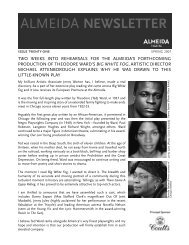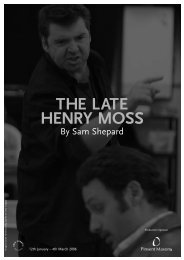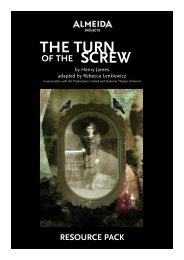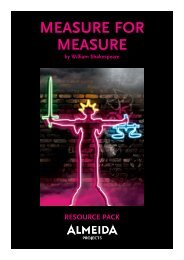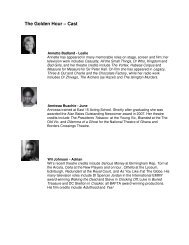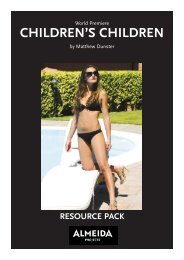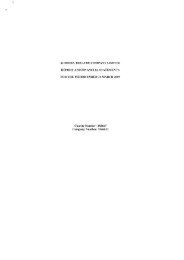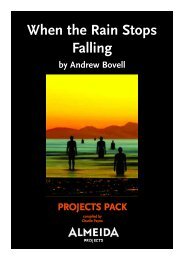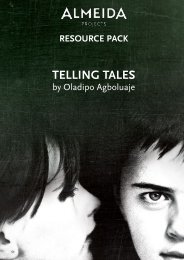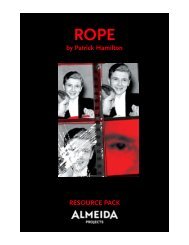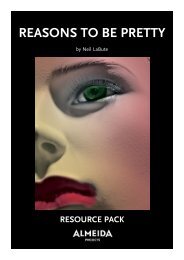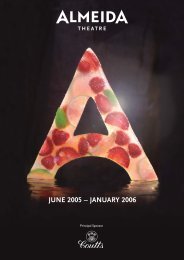Through a Glass Darkly - Almeida Theatre
Through a Glass Darkly - Almeida Theatre
Through a Glass Darkly - Almeida Theatre
- No tags were found...
Create successful ePaper yourself
Turn your PDF publications into a flip-book with our unique Google optimized e-Paper software.
Dimitri Leonidas and Ruth Wilson in rehearsalPhoto: Bridget Jonessomeone's face and gets very close in and the character is making direct eye contact with thecamera, then they will look away and the camera follows their gaze. Bergman also does a lot of workthrough visual imagery. In this film he does a lot with landscape, giving a sense of the island thatthey're on, the barrenness and also its kind of beauty. He parallels landscape a lot with Karin'semotional and mental state, with the sea, and sexual tension with the landscape. Those are imagesyou can suggest them on stage but you can't literally cut away to them to give gravity to a line. Itworks perfectly on film, however, because it's a different medium. So instead you have to look atwhat theatre can do really well.AP: How have you done that, and kept the spirit of the film?JW: I think there are two ways that we tried to adapt and keep the spirit. To maintain that spirit whatwe've tried to do is allow there to be more dialogue: some of his conversations have a huge amountbeing said in only a few lines, and if you're not careful it could feel either densely poetic, and quitedifficult to say, or you're getting too much information. Bergman’s dialogue works well in hismedium, but if we only put his words on stage, you might find yourself a) not 100% sure what'sgoing on and b) finding it a bit clumsy. So it's been about taking the essence of a conversation,which might only be a page in the screenplay, and opening that up so it's two or three pages long,and it effectively still has the same journey. But there are more beats in it: more things happen. It'sjust elucidating slightly, because Bergman can be very pithy sometimes.AP: Where did you start? Describe the process in adapting the film to a play.JW: The first thing that happened is that the writer Andrew Upton sent us his version of it, which isvery different. It was his idea to adapt the film and he'd got the rights to do it. What he sent us was aversion that was set in America in the early 21st Century, so he'd updated it and located itsomewhere else. He also retained the play within the play from the film, but he went further than thatand actually started his play the night before the film begins, with Max and Karin rehearsing the playwithin-the-playthat they're going to do the next night. It's interesting though that in our own way weboth sought to do something with the play-within-the-film. He chose to do more of it, because hewanted to open it out further, whereas I chose to take it away and replace it with the object.We were invited to the inaugural Bergman <strong>Theatre</strong> Festival in Stockholm last year; they had asked usto come and do a reading of the play, and although we hadn't actually got to the stage where we wereInterview with Jenny WortonResource Pack: <strong>Through</strong> A <strong>Glass</strong> <strong>Darkly</strong> by Ingmar Bergman 24



